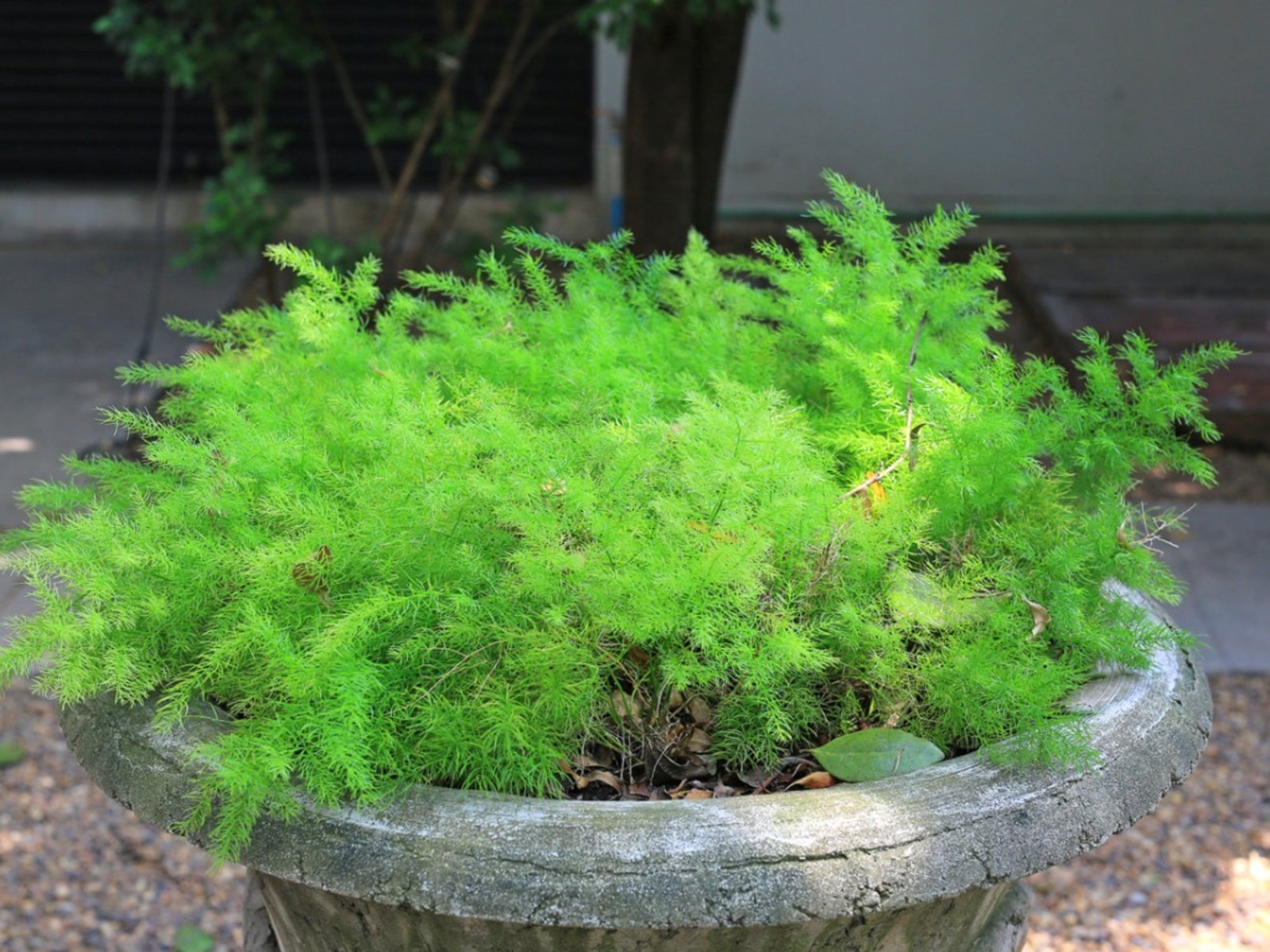Asparagus Fern: Complete Plant Care And Growing Guide

How To Grow And Care For Asparagus Ferns
There are a number of asparagus species called asparagus fern, and each one is slightly different. Asparagus densiflorus, known as asparagus fern, has fern-like foliage in an arching mound to 3 feet (.9 m) tall. Asparagus setaceus, also called asparagus fern, is a bushy, evergreen vine that can grow to 20 feet (6 m) long. Asparagus retrofractus, commonly called “ming asparagus fern,” rarely grows above 8 feet (2.4 m) tall. Read on to learn how to care for asparagus fern.
Quick Facts:
Botanical name: Asparagus spp.
Height: 2 - 20 Feet (.6 - 6 m) depending on species
Spread: 2 - 5 Feet (.6 - 1.5 m) depending on species
Sun exposure: Full sun or part shade
Soil requirements: Light, rich, moist but well-drained soils
Hardiness zones: USDA zones 9 - 12
Sign up for the Gardening Know How newsletter today and receive a free copy of our e-book "How to Grow Delicious Tomatoes".
When to plant: Plant in spring or fall
Asparagus Fern Care
Learn some basic rules for keeping your asparagus fern healthy and growing.
Light
Asparagus ferns grow well in part-shade locations with bright indirect light or filtered sun. While they can be grown in direct sun, hot afternoon sun can scorch the leaves. Too much shade can also fade the leaves. Indoor asparagus ferns do best in south-facing windows.
Water
Provide regular water during the growing season from spring to autumn. Reduce water during winter.
Temperature & Humidity
Asparagus ferns grow well with regular summer temperatures. Winter temperatures should not dip below 50°F. In cooler regions, these plants can be grown as houseplants or overwintered indoors. Asparagus fern plants prefer higher humidity.
Soil
A common asparagus fern does best in organically rich soil that is consistently moist and well drained.
Fertilizer
Other than adding organic compost to the soil, no additional fertilizer is recommended for asparagus ferns.
Problems, Pests & Diseases
Several insect pests and diseases can be problems for the plant. Outdoor plants may be troubled by slugs, scale, spider mites, mealybugs and aphids. For both outdoor and indoor asparagus ferns, keep an eye out for leaf spot and root rots. Some species are considered invasive in warm climates.
Pruning
Pruning is occasionally required as part of asparagus fern care. Pinch back stem tips as needed to maintain plant form and promote dense foliage growth. If an outdoor asparagus fern plant loses its attractive shape, you can prune it back to soil level and allow it to regenerate.
Asparagus Fern Propagation
You can increase the number of asparagus ferns by propagatin them either by seed or division. Here’s how.
How to Grow Asparagus Fern Through Division
Cutting the plant’s rootball into sections and replanting is a fairly simple process. It may be a good idea to wait until the plant’s roots have filled the pot before uprooting the plant for division.
How to Grow an Asparagus Fern from Seed
Propagate by seed after collecting berries from the fern. Remove the seeds and plant them in well-draining, rich soil. The plant propagates easily from seeds and birds eating the berries often spread the seed to new locations.
Repotting
Part of asparagus fern care for those growing container pots is repotting. Move up to a larger pot every three or four years.
Overwintering
If you live outside the hardiness zone range for asparagus ferns you can grow them in containers. Bring them indoors to overwinter if temperatures will dip below 50 degrees F.
Types of Asparagus Fern
Many types of asparagus species are called asparagus fern. Asparagus densiflorus, known as asparagus fern, has fern-like foliage in an arching mound up to 3 feet (.9 m) tall. Asparagus setaceus, also called asparagus fern, is a bushy, evergreen vine that can grow to 20 feet (6 m) long. Asparagus retrofractus, commonly called ming asparagus fern, rarely grows above 8 feet (2.4 m) tall.
Frequently Asked Questions
Are Asparagus Ferns Toxic to Cats and Dogs?
The berries of some asparagus ferns are toxic to cats and dogs.
How Do You Make an Asparagus Fern Bushy?
To make indoor plants more bushy, pinch back the tips of the branch stems. This will encourage dense foliage growth.

Becca Badgett was a regular contributor to Gardening Know How for ten years. Co-author of the book How to Grow an EMERGENCY Garden, Becca specializes in succulent and cactus gardening.

